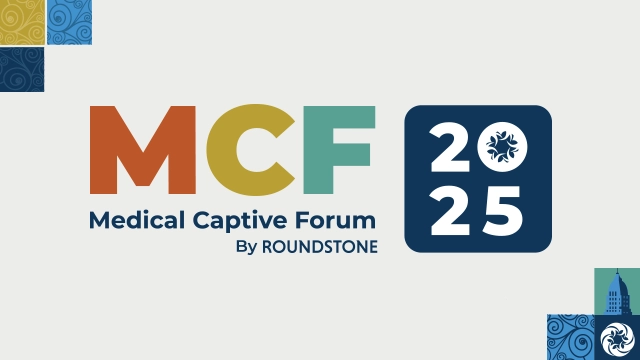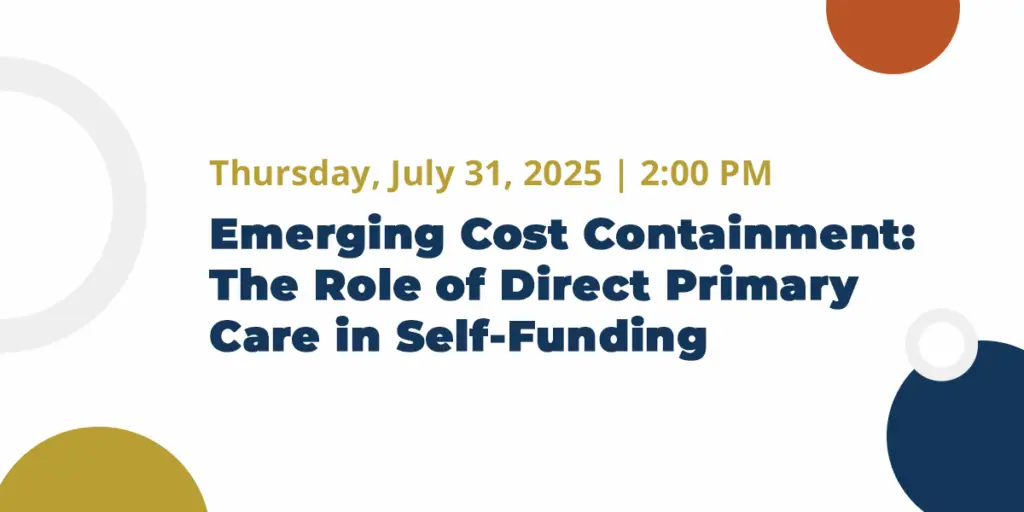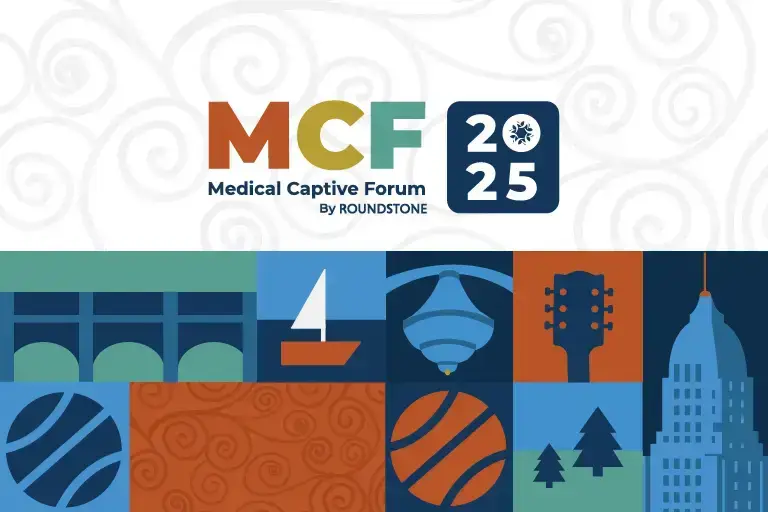Highlights
- Many small to midsize employers have misconceptions about captive insurance, which could deter them from unlocking the benefits of self-funding.
- Employers are concerned about the risks and burdens of overseeing their employee health benefits plan, fearing it could expose them to financial vulnerability.
- With Roundstone’s group captive, businesses combine resources and buy stop-loss insurance, allowing them to spread risk while managing their own plan, so self-funding becomes a safe and viable option to save on benefits.
- Roundstone offers comprehensive support with plan design and implementation, ensuring you never feel alone regarding your health plan choices.
- The Roundstone Guarantee ensures you’ll see savings within the first five years, presenting a group captive as a more advantageous option compared to traditional plans that rise in cost annually.
Small and medium-sized businesses (SMBs) looking for a more effective way to handle health insurance in 2024 might find self-funded health plans appealing. This option allows smaller companies to enjoy the advantages of self-funded insurance plans, such as more control over their healthcare policies and the possibility of saving money.
Although self-funded insurance for small businesses offers benefits, switching to a self-funded group captive plan can bring up worries, like its complexity and the potential for unforeseen expenses. However, these concerns usually don’t match the actual experience. Thanks to a stop-loss captive, businesses can cap their expenses, so self-funding becomes a safe, affordable, and viable option for lowering the cost of their benefits.
Understanding common misconceptions to group captive insurance and the truth behind them can lead to better flexibility, improved coverage, and a cost-saving health insurance plan for your business.
1. The Maximum Cost is Greater Than My Fully Insured Renewal.
Many employers fear that switching from a fully funded plan to self-funded insurance will end up costing more, especially in terms of captive insurance costs. This concern is largely unfounded. In reality, sticking with a fully funded plan almost always results in higher costs. In fact, from 2022 to 2023, premiums increased by 7%, with a 22% rise over the past six years.
Self-funded insurance with Roundstone allows for lower plan costs and potential long-term savings. On average, our group captives perform at 94% of expected costs, far below the maximum cost. Participants also receive an 8% distribution from underwriting profits, boosting savings from the get-go. The majority of Roundstone’s mature plans renew at 3% to 5%.
The biggest captive insurance benefit is the ability to control spending. With our self-funded plans, you can implement cost containment measures throughout the year and only pay for actual claims, which typically result in underpayment. And when you partner with Roundstone, you get back 100% of what you don’t spend. We pay our distributions in cash, about six to seven months after the policy year concludes.
Since 2003, we’ve returned $72 million in unused premiums to plan members. We also offer the Roundstone Guarantee, which promises you’ll see savings within the first five years, or we’ll make up the difference.
In fact, two-thirds of Roundstone’s clients save enough in their first four years to completely pay for their fifth year of claims. And 100% save money, full stop.
2. My Company is Too Small to be Self-Insured.
For years, self-funding employee health benefits was an approach to health insurance only available to large corporate employers. This cost-effective solution is embraced by 98% of companies with 1,000 or more employees. For smaller companies, it was out of reach due to a lack of financial resources and an ample-enough employee population to ensure risk predictability.
In 2005, Roundstone transformed the health insurance industry with an innovative self-funding approach — the group captive for employee benefits. This groundbreaking model enabled companies with 25 to 1,000 employees to tap into the benefits of self-funded insurance.
By forming the industry’s first group captive insurance plan, Roundstone made it possible for smaller businesses to pool their risks together. This collaborative approach not only helps reduce premiums but also ensures that employees receive exceptional benefits.
As part of a Roundstone group captive, you spread the risk with other like-sized businesses to fund your insurance plan, which you can build from the ground up. To further protect you from catastrophic or aggregate claims, you can also purchase stop-loss insurance, which steps in to pay for high-cost obligations.
We offer specific advanced funding for stop-loss coverage, which lets you receive advanced coverage for claims that exceed your stop-loss deductible. Your plan also allows for aggregate accommodation, which can normalize your cash flow and advance funds if your claims exceed your pre-funded account.
These accommodations make self-funding possible for smaller companies by combining resources, minimizing risk, and advancing the necessary funds for high-cost claims.
3. Self-funding is Complicated and Requires Additional Resources.
At first glance, setting up a self-funded insurance plan can feel overwhelming and complicated. Designing and managing your own insurance plan seems like it would take considerable experience, training, and know-how.
While it’s true that switching to a group captive requires more employer involvement, working with Roundstone and your advisor means you’re not alone. Here’s how we support group captive members, from the initial conversation with the Roundstone team to implementing the plan and making changes year-over-year:
- Initial meeting. Your journey begins with a detailed discussion led by a dedicated Roundstone specialist. They will help you understand how self-funding can work for your company and tailor a group captive plan to fit your organization’s unique needs.
- Plan design. Roundstone’s team works closely with you and your advisor to design a plan that aligns with your business goals, ensuring it addresses the specific health needs of your employees while eliminating unnecessary costs.
- Onboarding. Roundstone provides step-by-step guidance to ensure you and your employees understand the benefits and how to use your new health plan effectively.
- Selecting a Third-Party Administrator (TPA). Roundstone helps you select an approved TPA to take over the administrative side of the plan. We recommend Bywater, our in-house TPA, but you are free to choose any TPA you prefer. We can also make a recommendation from our list of vetted TPAs. Your TPA handles employee enrollment, Affordable Care Act (ACA) reporting, claims processing, and plan documents, taking the administrative burden off your HR team. They also manage customer service and online member portals, similar to what you’d find in a traditional plan.
- Roundstone advisor. Throughout your experience, you’ll have the support of a Roundstone advisor. Your advisor is your point of contact for any questions, adjustments to your plan, or strategic advice. They ensure your health plan continues to meet your evolving needs and help you navigate challenges that arise.

4. I’m Not Comfortable With Lasers.
A laser in stop-loss insurance means setting a higher deductible for individuals at increased risk of large claims instead of applying one high deductible to everyone. For instance, a laser agreement may increase the deductible for certain employees with chronic conditions, such as diabetes or heart disease. This lets you better manage risks in group captive insurance.
Concerns about using lasers typically come from unfamiliarity with the concept rather than poor experiences or research-based objections. Lasers, or lasering, allow for a more personalized way to reduce risk and save money in group captive insurance. In reality, the use of lasers can be a highly effective strategy to help reduce the impact of these high claimants.
It’s also important to remember that under a no-laser, traditional policy, those high claimants aren’t free. You still have to cover the high costs for that individual, usually in the form of high premiums or expensive renewals. And you’ll continue to carry that cost long after the high claimant individual leaves the plan.
Companies not employing lasers could see their costs surge due to the pool’s overall increase in claims. For example, a company with a $30,000 specific deductible might find the cost-sharing of a high claimant more economical than a substantial rate increase that affects all groups within the pool, regardless of their individual claims history.
The average laser amount over specific deductible is $111,000. In reality, only a third of lasered claimants actually reach their lasered amount.
More often than not, there are cost saving strategies that can be applied to people covered by a laser to manage costs. And if the lasered individual leaves the plan, the employer is not left paying a loaded premium for a risk that no longer exists.
5. Level Funding is Less Risky vs. Self-Funding in a Captive.
Large insurance companies often offer level-funded programs to midsize employers, which can mimic some advantages of self-funding. However, these programs typically involve high fixed costs and give back only a small portion of any underwriting profit to the employers.
In a level-funded versus self-funded plan, you may have little flexibility in plan design or control over service providers. Exiting or renewing these plans can also be prohibitively expensive. While level-funding can offer a bit more freedom than a traditional plan, it can’t compare to self-funding in terms of control and savings.
Choosing to be self-funded within a group captive delivers real advantages over level funding. It comes with low fixed costs, about 15% of your total premium, giving you clear control and the ability to adjust your plan as needed. The other 85% are variable costs, which you can lower by using tools like Roundstone’s CSI Dashboard to monitor claims data in real time.
With self-funding, you also get back 100% of unused premiums, no strings attached. This money can go toward enhancing your benefits plan or other priorities that fit your organization’s needs.
Explore Self-Funding With Roundstone Today
ROUNDSTONE is an innovative employee health benefits company. We help small and midsize organizations offer competitive benefits at a lower cost by self-funding health insurance through our group medical captive. The Roundstone Captive enables companies to self-insure safely by pooling hundreds of employers together to share risk and save money.
With easy onboarding and personalized support every step of the way, the Roundstone Captive offers control, flexibility, and transparency and returns all savings to employers, where they belong. We believe in always aligning with the employers’ best interests and remain committed to our mission — quality, affordable healthcare and a better life for all.
Speak to a Roundstone Specialist today about transitioning to a self-funded group captive plan to take back control of your healthcare spending and start saving.
Glossary
- Maximum cost. Maximum cost refers to the highest possible expense that an employer can incur within a self-funded health insurance plan during a policy year. It is determined by the aggregate stop-loss coverage, which provides a cap on the total claims liability for the employer. This ensures financial predictability and risk management for self-funded plans, protecting employers against unexpectedly high claims.
- Specific advance funding. Specific advanced funding is a financial arrangement within a self-funded health plan where the stop-loss insurer immediately reimburses the employer for claims that surpass the individual deductible. This arrangement improves cash flow for employers, preventing them from having to cover significant claim costs out-of-pocket while waiting for reimbursement.
- Aggregate accommodation. Aggregate accommodation is a feature in self-funded health insurance that provides additional protection to employers when total claims approach or exceed the aggregate deductible near the end of the policy period. This provision allows for early access to stop-loss coverage funds, ensuring the employer does not face a sudden, significant financial burden as the plan year concludes.
- Lasers. Lasers are a risk management tool used in stop-loss insurance underwriting, where a higher individual deductible is applied to specific high-risk individuals within a self-funded plan rather than across the entire group. This allows the insurer to manage exposure to high-cost claims from known conditions without increasing premiums or deductibles for the entire plan population.













